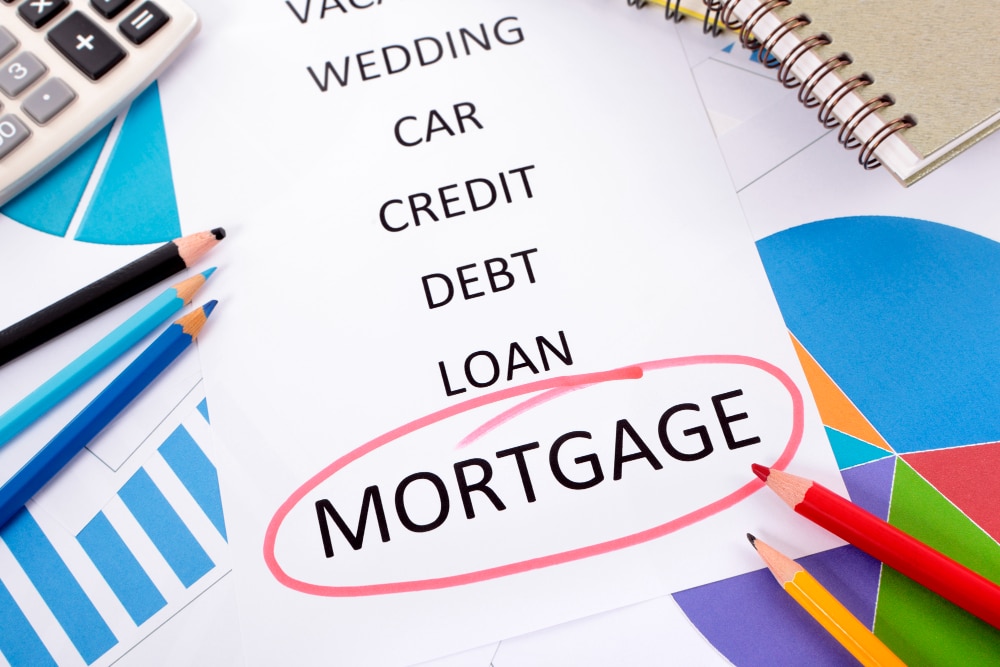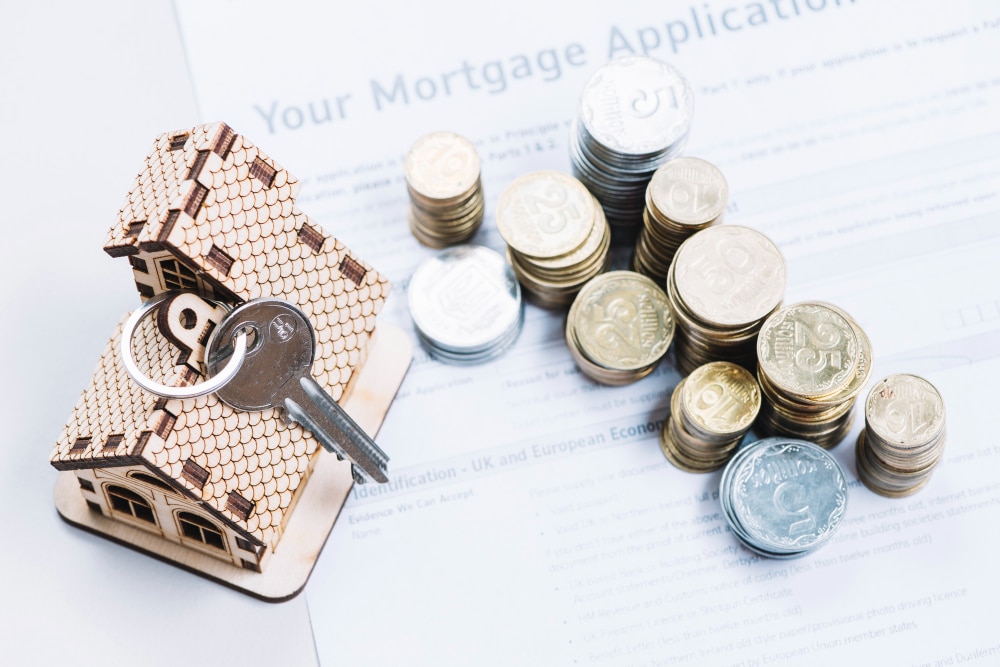
Mortgage Refinancing: 5 Smart and Strategic Ways to Fund Your Home Remodel
Starting on a home remodeling project can dramatically improve your quality of life by enhancing your living space’s functionality and aesthetic appeal. However, the financial aspect of undertaking such projects can be daunting for many homeowners. Mortgage refinancing stands out as a strategic solution to this challenge, offering a pathway to secure lower interest rates and more favorable payment terms. This approach not only streamlines your financial commitments but also ensures your home can adapt to meet your evolving needs over time.
With the right advice from mortgage specialists and thorough planning, tapping into your mortgage for renovations could integrate seamlessly with your financial plans, making your dream remodel more attainable than ever before. Let’s dive into the details:
Contents
- Leveraging Mortgage Refinancing for Your Remodeling Project
- Navigating the Pros and Cons of Refinancing
- The Refinancing Process: A Step-by-Step Guide
- Making the Decision: Is Refinancing Right for You?
- Conclusion: Empowering Your Remodel with Strategic Financing
- FAQ
- Question 1: How long does the refinancing process take?
- Question 2: Will refinancing to fund a remodel affect my property taxes?
- Question 3: Can I refinance if I have an FHA loan?
- Question 4: Is there a limit to how much equity I can access for remodeling?
- Question 5: What happens if my remodeling project goes over budget?
Leveraging Mortgage Refinancing for Your Remodeling Project
Unlocking the Potential of Home Equity
- Understanding Equity: Equity is the portion of your home that you truly own, calculated as the current market value of your property minus any outstanding mortgage balance. It’s an asset that grows over time as you pay down your mortgage and as your home’s value appreciates.
- Utilizing Equity for Remodeling: By refinancing, you can access this equity, converting it into liquid cash that can be used to fund your home improvement projects. This is a pivotal step in leveraging your biggest asset—your home—to enhance its value and your living experience.
Securing a More Advantageous Loan
- Rate Research: Delve into the current mortgage rates, comparing them with the terms of your existing loan. A lower interest rate can significantly reduce your monthly mortgage payments, freeing up more of your budget for other uses.
- Choosing the Best Loan Option: Evaluate the pros and cons of various loan types, including fixed-rate mortgages, which offer stability in payments, and adjustable-rate mortgages, which may provide lower rates initially but carry the risk of future increases.
Planning Your Remodeling Finances
- Cost Estimation: Thoroughly estimate the costs associated with your desired home improvements. It’s crucial to be as accurate as possible in this step to ensure your refinanced loan sufficiently covers your project needs.
- Budgeting for Unexpected Expenses: Always incorporate a contingency budget to cover unforeseen costs during the remodeling process. This proactive approach helps avoid financial shortfalls mid-project.
Achieving Lower Monthly Payments
- Savings Calculation: Utilize online mortgage calculators to compare your current monthly mortgage payments against what they could be post-refinancing. This visual representation can clearly illustrate the potential savings.
- Weighing Long-Term Effects: Consider the broader financial implications of these savings, including the total interest paid over the life of your loan and how refinancing affects your equity buildup.
Simplifying Your Finances Through Consolidation
- Loan Consolidation: Refinancing presents an opportunity to consolidate multiple home loans into a single mortgage. This consolidation can lead to lower overall monthly payments and a more streamlined financial situation.
- Financial Management: Discuss the benefits of this consolidation with a financial advisor to understand how it could simplify your monthly budgeting and potentially save you money on interest over time.
Comprehending Refinancing Costs
- Detailed Cost Breakdown: Prepare a comprehensive list of all fees and costs associated with refinancing, including lender fees, closing costs, and any penalties for early mortgage repayment.
- Evaluating the Breakeven Point: Calculate the breakeven point—the time it takes for the monthly savings from the lower interest rate to exceed the costs of refinancing. This calculation is critical in determining whether refinancing is a financially prudent decision.
Assessing the Impact on Your Loan Term
- Term Considerations: Understand how adjusting your loan term affects your financial picture. Extending the term can lower monthly payments but may increase the total interest paid, while a shorter term increases monthly payments but reduces total interest costs.
The Refinancing Process: A Step-by-Step Guide
Identifying Your Remodeling Ambitions
- Project Prioritization: Clearly identify and prioritize your remodeling goals. Whether it’s updating the kitchen, adding a bathroom, or expanding living space, each project should align with your long-term home ownership plans.
- Goal Setting: Establish specific, measurable objectives for each project to guide your planning, budgeting, and financing strategies.
Undertaking a Financial Review
- Mortgage Analysis: Review the specifics of your existing mortgage, including the current interest rate, monthly payment amount, and the outstanding balance.
- Property Valuation: Obtain a current appraisal of your home to accurately gauge its market value and determine the amount of equity available for refinancing.
Exploring Lender Options
- Market Shopping: Engage with various lenders to explore the different refinancing options available. Each lender may offer unique benefits, rates, and terms that could be advantageous for your situation.
- Broker Consultation: Consider working with a mortgage broker who can offer expert guidance and facilitate connections with lenders that best suit your refinancing needs.
- Documentation Preparation: Assemble all necessary documentation, including proof of income, tax returns, and detailed plans for your remodeling project, to support your refinancing application.
- Approval Process Insights: Gain an understanding of the lender’s approval criteria, such as creditworthiness and debt-to-income ratio, to ensure a smooth application process.
Finalizing the Refinance and Initiating Your Project
- Closing the Deal: Familiarize yourself with the refinancing closing process, which will finalize your new mortgage terms and provide access to the funds needed for your remodeling projects.
- Project Commencement: With financing in place, you can confidently begin your home improvement projects, knowing that the financial aspects are securely managed.
Making the Decision: Is Refinancing Right for You?
Conducting a Financial Analysis
- Overall Financial Assessment: Take a holistic view of your financial health, considering not only the immediate impacts of refinancing but also its long-term implications on your financial stability and home equity.
- Budget Compatibility: Ensure that the adjusted mortgage payments post-refinancing are compatible with your overall budget and financial goals, especially in light of the added expenses from your remodeling projects.
Seeking Expert Guidance
- Professional Consultation: Engage with financial advisors and mortgage specialists to gain a comprehensive understanding of how refinancing for a remodel fits within your overall financial plan.
- Market Insight: Leverage expert advice to navigate current market conditions, interest rates, and lending trends to secure the most favorable refinancing terms.
Long-Term Financial and Lifestyle Planning
- Evaluating Home Value Impact: Carefully consider how your planned remodels will enhance the value of your home and contribute to your quality of life.
- Aligning with Goals: Reflect on how the changes brought about by your remodeling projects align with your long-term financial objectives and lifestyle aspirations.
Conclusion: Empowering Your Remodel with Strategic Financing
Choosing to refinance your mortgage to fund home remodeling is a decision that intertwines financial acumen with personal goals. This pathway not only makes your remodeling aspirations more achievable but also holds the potential to significantly increase the value and enjoyment of your home. As you navigate this decision, consider the comprehensive impact of these changes on your home’s value and your overall financial well-being.
We encourage you to share your experiences and insights with our online community via following our daily updates and ideas on Instagram! Whether you’re in the planning stages or have successfully completed a remodel through refinancing, your stories can offer valuable perspectives to others contemplating similar decisions. All the best!
FAQ
Question 1: How long does the refinancing process take?
Answer: The refinancing process typically takes 30 to 45 days from application to closing. However, the timeline can vary based on the lender’s requirements, the complexity of your financial situation, and how quickly you can submit the necessary documents.
Question 2: Will refinancing to fund a remodel affect my property taxes?
Answer: Refinancing itself doesn’t directly affect your property taxes, but if your remodel significantly increases the value of your home, it could lead to higher property taxes. It’s best to consult with a tax advisor to understand the potential tax implications of your remodeling project.
Question 3: Can I refinance if I have an FHA loan?
Answer: Yes, you can refinance if you have an FHA loan. There are specific refinancing options available for FHA loans, including the FHA Streamline Refinance, which can simplify the process if you’re looking to lower your interest rate and monthly payments.
Question 4: Is there a limit to how much equity I can access for remodeling?
Answer: The amount of equity you can access for remodeling depends on the lender’s guidelines and the type of loan you choose. Typically, lenders allow you to borrow up to 80% of your home’s value, minus your existing mortgage. However, this can vary, so it’s important to discuss your specific needs with your lender.
Question 5: What happens if my remodeling project goes over budget?
Answer: If your remodeling project goes over budget, you’ll need to cover the additional costs out of pocket, unless you’ve arranged for a contingency fund as part of your refinancing loan. Planning carefully and working with experienced contractors can help prevent budget overruns.





